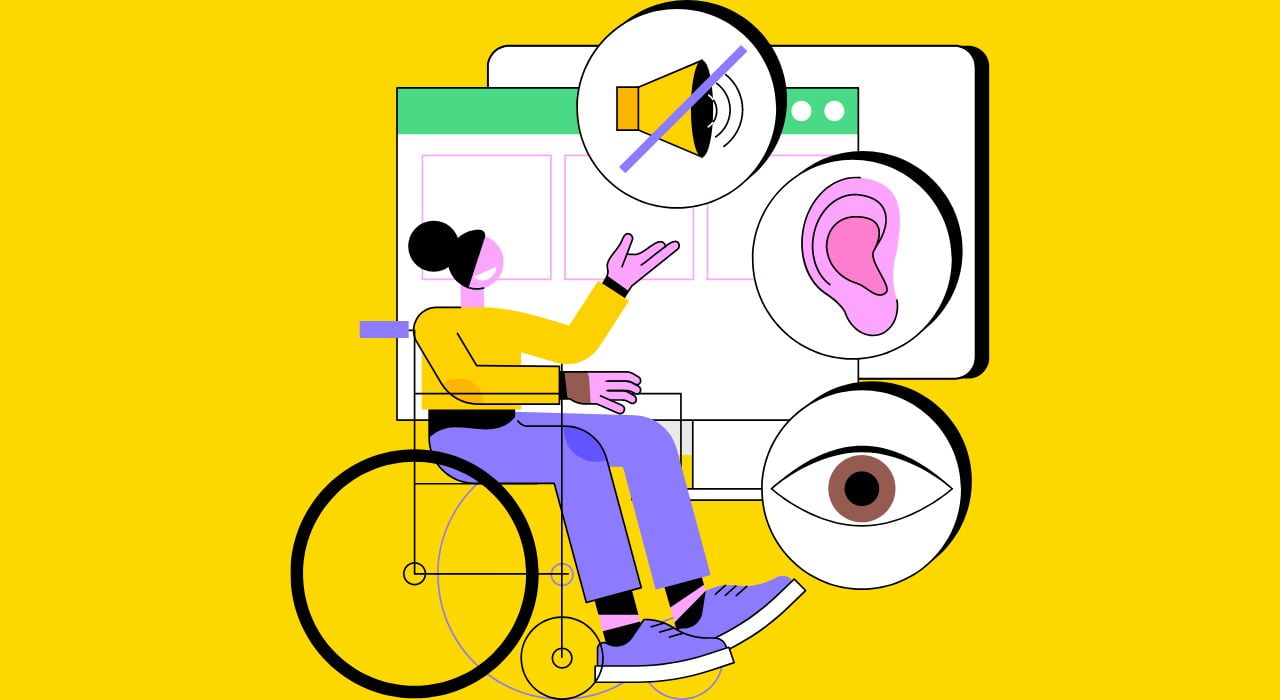
What Is Website Accessibility?
Website accessibility refers to the practice of designing and developing websites that can be accessed by everyone
It is important to implement Website Accessibility to ensure that all users, regardless of their abilities or disabilities, can access the content and functionality of a website without any barriers.

Your website serves as your shopfront, information hub, and interaction platforms for businesses, organisations, and individuals. However, just as physical spaces are adjusted to accommodate everyone, internet spaces, too, must be designed inclusively. This is where website accessibility comes into play. By ensuring everyone, can use the web effectively.
The Essence of Website Accessibility
Website accessibility is about making your website usable for as many people as possible. In essence eliminating barriers that might prevent interaction with, or access to, websites by people with disabilities.
When your website is accessible, users with disabilities can perceive, understand, navigate, and interact with the web, and even contribute to it. The spectrum of disabilities covers visual, auditory, physical, speech, cognitive, and neurological disabilities, and the web must be accessible to all these users.
Why Prioritise Accessible Website?
1. Inclusivity and Equal Access
At its core, website accessibility is a matter of equality. Everyone deserves equal access to information and functionality. By ensuring your website is accessible, you're not just complying with legal standards but also upholding the principles of inclusivity and non-discrimination.
2. Legal Compliance
Many countries have regulations and guidelines, like ACMA in Australia, the Americans with Disabilities Act (ADA) in the USA or the Equality Act 2010 in the UK, mandating that websites be accessible to everyone. Failing to comply can lead to legal repercussions and damage to your brand's reputation.
3. Enhanced User Experience and Reach
An accessible website often provides a better user experience for all visitors. It can improve navigation and help you reach a wider audience, visually challenged and those with temporary disabilities, ultimately benefiting your SEO efforts and potentially increasing your market share.
Key Principles of Web Accessibility
The Web Content Accessibility Guidelines (WCAG) developed by the World Wide Web Consortium (W3C) outlines specific standards to make web content more accessible. The principles of WCAG are known as POUR
1. Perceivable
Information and user interface components must be presentable to users in ways they can perceive. This means that users must be able to perceive the information being presented (it can't be invisible to all of their senses).
2. Operable
Users must be able to operate the interface (the interface cannot require interaction that a user cannot perform).
3. Understandable
Users must be able to understand the information as well as the operation of the user interface (the content or operation cannot be beyond their understanding).
4. Robust
Users must be able to access the content as technologies advance. As content needs to be robust enough to be interpreted by a wide variety of user agents, including assistive technologies.
Implementing Accessibility in Web Design
Implementing website accessibility in a website can seem daunting, but it's a progressive journey. Here are some steps to get started
1. Conduct an Accessibility Audit
Assess your current website to identify potential barriers for disabled users. Tools like WAVE or AXE can help you identify issues.
2. Follow WCAG Guidelines
Familiarise yourself with WCAG guidelines and principles. Use these as a framework to address the identified issues and incorporate new, accessible features into your website design and development.
3. Incorporate Accessible Design Elements
Ensure that your website has appropriate contrast ratios, alt text for images, labels for forms, and proper heading structures. Remember to make your website keyboard-navigable and screen-reader friendly.
4. Regular Testing and Feedback
Accessibility is not a one-time task but an ongoing process. Regularly test your website with real users, including people with disabilities, and be open to feedback and making continual adjustments.
5. Training and Awareness
Foster a culture of inclusivity of web accessibility within your organisation. Train your team on the importance of accessibility and how to implement and maintain it.
Website accessibility isn't just about adhering to standards or avoiding legal issues, it's about embracing the diversity of human experience.
It's about recognising the right of every individual to participate fully on the internet. By making your website accessible, you're not only opening doors to a broader audience but enriching the web with diverse interactions and perspectives. Everyone benefits from inclusivity, the shared knowledge, opportunities, and experiences. So, make the effort to make your website accessible and contribute to a more inclusive world.
